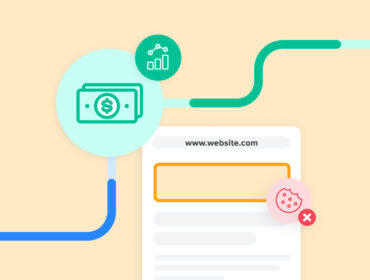With great data comes great responsibility
You know the old saying: With great data comes great responsibility. (Ok, we changed it a little, but the point still stands.)
Publishers and media brands now have an overwhelming amount of data sources to pull from. And that means they need to be smarter than ever about how to use and activate that data. As a 2022 study from Matillon found, data volumes are growing by over 60% per month across organizations. And over 20% of companies are drawing from 1,000 or more data sources.
So, how can businesses make the most of that data?
In a recent AdExchanger interview, Karthic Bala, EVP of Data, Product and Technology for CNET talked about the importance of upholding data privacy over monetization. In a sense, he’s right. Privacy is paramount to improving consumer experiences and building trust.
Still, we’d argue that instead of pitting privacy and monetization against each other, they actually go hand-in-hand. Respecting customer data — by using privacy-safe tools and strategies — only serves to improve monetization. And the right monetization strategies can yield even more valuable data for future engagement. Especially in a world without third-party cookies, you can’t have one without the other. They’re a package deal.

With that in mind, here are three ways publishers can respect and protect their data while using it to increase revenue.
1. Segment subscriber data to deliver personalized experiences
To start, publishers can organize their data into unique, targeted audience segments. This way, they can deliver more personalized content experiences to each consumer and offer more relevant ad placements to brand partners.

CNET, a tech publisher owned by Red Ventures (RV), does just that.
“RV probably has the biggest intent database I’ve seen,” Bala said. “It’s a huge pool of audiences and data segments. The idea is to use that to generate different revenue streams and deeper, richer partnerships.”
On the email channel, for example, publishers can use first-party data to monetize their content with targeted inventory packages, which are customized by:
- Content. A kitchen appliance brand, for instance, can launch ads in an email newsletter from a food or cooking blog.
- Audience. Publishers can sell ads based on specific demographics, behaviors, and interests.
- Season. Advertisers can get in front of shoppers for events like Black Friday and back-to-school season.
As Bala said, “[Data] can help us understand what is driving affiliate transactions, who those consumers are, and how you can take them from the top of the funnel to the bottom using personalization and recommendations.”
2. Unlock new business opportunities with first-party data
Publishers can also use first-party data to promote their own paid offerings like subscriptions and membership programs. As Bala said, CNET will only launch paid subscriptions if they include access to exclusive, high-value content. “But there could be [other] utilities that provide value around the content that might be paid for,” he added.
For example, you can use your data to see who’s engaged with your content but not yet subscribed. You can then reach those engaged readers with targeted promotions for your paid subscription program — increasing revenue and delivering more value to your most active consumers.

3. Implement contextual targeting and increase direct-sold deals
Publishers can pull contextual data signals to understand just what their audiences want to see. Even if people aren’t signed into your website or signed up for your newsletter, there are ways to pull and activate data to meet their interests.
“Not every user is going to be logged in or a subscriber,” Bala said. “But they’re still giving you first-party contextual data signals about what their intention is and what their outcome needs are […] Providing contextual targeting is a big part of how we look at the future.” That’s why LiveIntent uses Site Visitor Resolution and a proprietary identity graph to help publishers identify and target non-logged-in audiences.
Publishers can also use their wealth of data to launch direct-sold deals, giving brands access to premium inventory, custom ad units, and brand-safe content. CNET, for example, worked with LiveIntent to monetize their email newsletters with native ads. Eager to differentiate beyond just display formats, CNET used LiveIntent’s Native Ad Blueprints to launch direct-sold native inventory at scale and increase revenue.

With the blueprint, CNET easily matched ads to its own brand styling, creating a more seamless reader experience across newsletter templates. As a result, CNET saw a 67% increase in newsletter revenue in just 60 days. And they built a more robust direct-sold strategy without adding more work for their team.
Ready to drive more value and revenue from your audience data? Contact us to get started.


